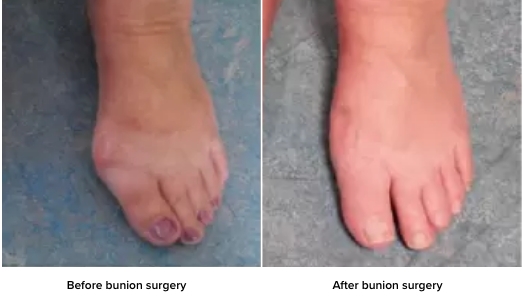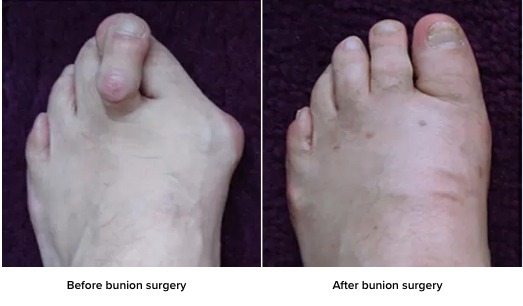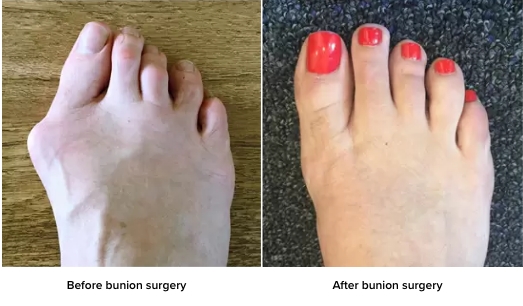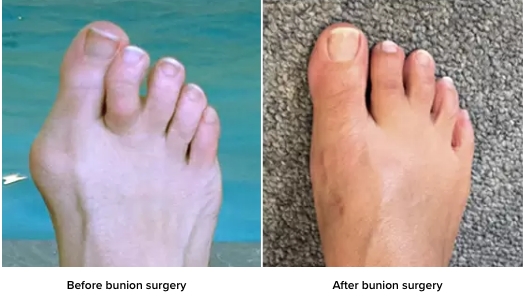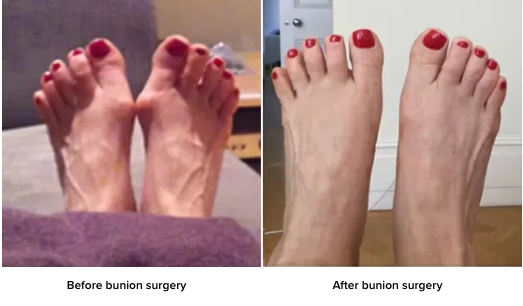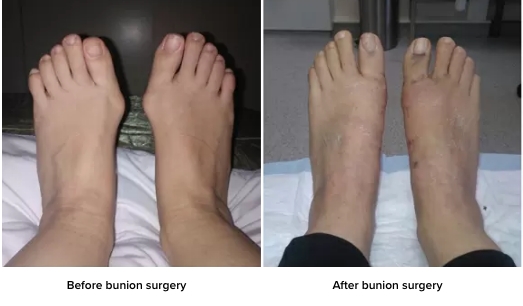
Untraditional surgery. Undeniable results (1,2)
Recovery from a traditional open surgery can be more painful and time intensive. But there’s nothing traditional about PROstep MIS. As a minimally invasive technique that’s resetting the standard of care, you can avoid traditional open surgery altogether.
What is PROstep MIS?
PROstep minimally invasive surgery involves performing surgery through tiny incisions, usually under some form of image guidance. The incisions are just a few millimeters long compared to 3-5 inch incisions used in traditional open bunion surgery.
This type of surgery has been enabled by advances in technology which have allowed the development of very small drills (called burrs). These can be used to make delicate cuts in the bones of the foot to re-align them through very small incisions. The surgery is carried out under image guidance in surgery and allows your surgeon to have eyes inside the foot when performing surgery.

Benefits of PROstep minimally invasive surgery
When compared to traditional open bunion surgery, PROstep results in:
- Quicker return to function2,3
- Less pain1
- Smaller scars1,2
- Overall increased patient satisfaction1
- Less need for opioids post-op4
Get back on your feet faster
Bunions can really slow you down but having a traditional open surgery can require a longer, more painful recovery, which means putting life on pause. If you desire a quicker return to function2,3 such as driving, working, exercising or whatever else, choose PROstep MICA minimally invasive surgery—and get relief.


A visible difference
PROstep MIS requires much smaller incisions compared to an open procedure,1 meaning you won’t have a large scar as a result.1,2 Effective relief from bunion pain is the most important benefit but preserving the natural look of your foot is also part of the PROstep standard – a difference you can see as much as you can feel.
Faster recovery
Patients who experienced minimally invasive surgery on average can recover faster compared to a traditional open procedure.2,3 Typically, patients walk out of surgery in a post-op shoe without the use of assistive devices such as a knee scooter or crutches.

Is it time to consider PROstep minimally invasive bunion surgery?
TAKE THE NEXT STEPHow does it work?
PROstep MIS uses minimally invasive techniques and specialized equipment to ensure minimal disruption to the foot. Smaller micro-incisions are made at targeted positions in the foot as opposed to the larger incisions made in traditional open procedures. Then an x-ray is used to guide a small, specialized burr, which shaves the bone at the joint and inserts stabilizing screws to re-align the toe, ensuring less scarring.
Bunion surgery: before & after
References:
- Lam P, Lee M, Xing J, Di Nallo M. Percutaneous Surgery for Mild to Moderate Hallux Valgus. Foot Ankle Clin N Am 2016; 21: 459-477.
- Lee M, Walsh J, Smith MM, Ling J, Wines A, Lam P. Hallux Valgus Correction Comparing Percutaneous Chevron/Akin (PECA) and Open Scarf/Akin Osteotomies. Foot Ankle Intl 2017; 38(8): 838-846.
- Maffulli N, Longo UG, Oliva F, Denaro V, Coppola C. Bosch Osteotomy and Scarf Osteotomy for Hallux Valgus
- Jimmy J. Chan, MD; Javier Z. Guzman, MD; Andrea Nordio, MD; Jesse C. Chan; Carl M. Cirino, MD; Ettore Vulcano, MD. Opioid Consumption and Time to Return to Work After Percutaneous Osteotomy in Foot Surgery. Orthopedics. May 7, 2020.
- www.aaos.org
For important risk information click here
Individual results and activity levels after surgery vary and depend on many factors including age, weight and prior activity level. There are risks and recovery times associated with surgery and there are certain individuals who should not undergo surgery. Only a physician can tell you if this product and associated procedure are right for you and your unique circumstances. Please consult with a physician for complete information regarding benefits, risks, anticipated implant duration and possible outcomes.
AP-015739
